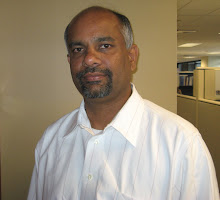Your organization has chartered you with developing a nascent EA program. You gleefully rub your hands and proceed to get to work. First comes the nebulous, then the specifics and then hopefully the applications of the specifics. As you diligently move from one phase, it is very easy to get carried away and look for perfection at every stage. So how do you make sure it is all relevant from your organization’s perspective?
If you take a look at all of the wonderful frameworks that abound the literature today, these are all well thought out and require significant amount of investment both in time, effort and cost. But in reality, are most corporations willing to spend the time and effort to go through a rigorous exercise of aligning/developing to these frameworks?
Sure, some of them will. These are usually organizations for whom process, standardization, precision are necessary aspects of their domain and are most likely in the aerospace, defense, nuclear fields. But for the typical for-profit business entity who can live with a degree of variability in their product offering/service, investing in developing or adapting an enterprise architecture framework is something that they can always put off until next year.
Then, what is the solution. Keep it simple, realistic and always practitioner oriented. Be ready to show ROI at every stage of the game. Keep your value propositions specific and quantifiable as much as possible. In the coming days, I am going to introduce a framework which purports to do just the same. It is called SEAM™.
SEAM™ stands for Simple Enterprise Architecture Management.
Stay tuned.
Wednesday, April 15, 2009
Subscribe to:
Posts (Atom)
About Me

- Sree Sundaram
- Sree Sundaram is currently a Sr. Director of Enterprise Architecture at a major global technology firm. He is currently engaged at two major international biotechnology firms in optimization and migration of infrastructure from their current platform to a newer technological platform that is in line with their current and future business needs. Sree has solid experience in understanding the needs of both middle and top level management and has the ability to communicate at both levels. He is fundamentally aware that the transactional and short-term needs of middle level management are different from the long-term vision of top-level management. He has successfully dealt with such issues by providing an IT framework that meets both the short term and long term needs. In general, Sree helps to prioritize competing initiatives using a combination of his acumen, communication skills, strategic and operation plans.